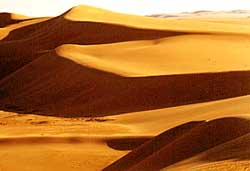DK Earth: Climate Zones
Earth has three main climate zones—tropical, temperate, and polar. These zones can be further divided into smaller zones, each with its own typical climate. A region’s climate, together with its physical characteristics, determines its plant and animal life.
Polar climates are cold and dry, with long, dark winters. In the tundra (a treeless region bordering the Arctic), temperatures rise above freezing for only a few months each year.
Boreal (cold coniferous) forests lie south of the tundra, stretching across much of northern Canada, Scandinavia, and Russia. Temperatures fall below freezing for 4–6 months a year.
On mountains, the temperature decreases with altitude (height), and many high peaks are always covered in snow. Mountain climates are usually wetter and windier than lowland regions.
Temperate climates have warm summers and cool winters with year-round rain or snow. Temperate forests are characterized by deciduous trees, which lose their leaves during the winter.
A Mediterranean climate is found in regions bordering the Mediterranean Sea, and in Australia and California. It is characterized by hot, dry summers and cool, wet winters.
Earth’s deserts are hot and dry year-round, and usually receive less than 10 in (250 mm) of rainfall a year. Deserts are often found in the center of continents, far from the sea.
Dry grasslands are found in the center of continents where temperate variations are extreme. They have hot summers, cold winters, and little rainfall, so very few trees can grow there.
Tropical grasslands, such as the African savanna, lie between desert areas and tropical rainforests. The climate is hot all year, but with a distinct wet season and dry season.
A small area with a different climate to its surroundings is said to have its own microclimate. Examples include a city or a rooftop garden. The temperature in cities may be around 11ºF (6ºC) warmer than the surrounding countryside because buildings and paved streets hold the Sun’s heat longer than vegetation. Artificial heating in buildings also contributes to higher city temperatures.
Over the past two million years, Earth’s climate has slowly changed. Long, cold periods called ice ages, or glacials, have been interspersed with warmer periods. The last ice age ended about 10,000 years ago. At its height, all of northern Europe and parts of North America, Siberia, New Zealand, Tasmania, and the southernmost tip of South America were covered by ice sheets up to 3,300 ft (1,000 m) thick.
Some scientists believe that Earth will enter another ice age in a few thousand years. However, almost all scientists believe that pollution caused by human activities is slowly causing the planet to grow warmer—a phenomenon called global warming.
Naturalist Louis Agassiz studied glaciers and the effects of ice erosion in areas where glaciers no longer existed. He put forward the theory that much of Europe and North America was once covered by ice sheets. Through his work, the idea of “ice ages” became generally accepted.

